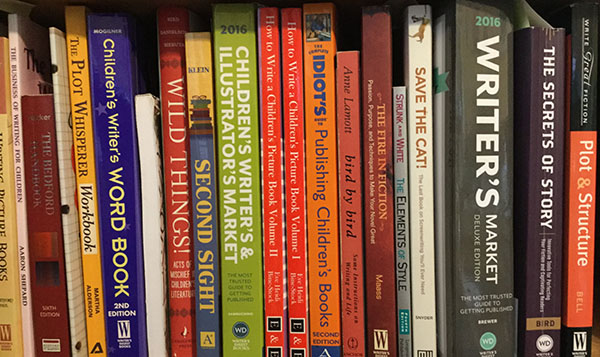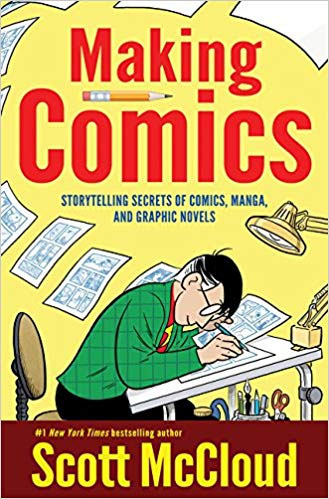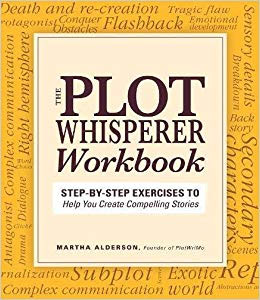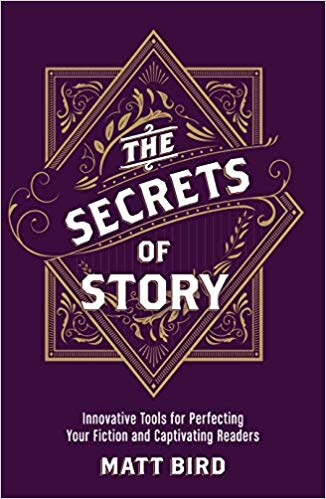
It is not at all uncommon for someone to pick my brain as to how to get their story published. Sometimes it is someone who’s already read a lot of books and gone to some writing conferences, but most of the time it is someone who has read zero books on craft and maybe hasn’t even written their story down yet. And that’s fine. Here’s what I tell them: read some books. There is so much information out there and all you have to do is look for it. I think people think there is a trick. There is no trick. Just work. A lot of work.
But let’s get back to reading. You need to read. If you are wanting to write a middle grade graphic novel. Read a ton of middle grade graphic novels. If you want to write a picture book. Read a ton of picture books. If you want to write a cowboy romance, giddy up! I’m sure there’s a sub genre full of ‘em. But start with reading the genre in which you want to write.
Have you done that? Good. Now let’s talk about books on craft.
(Above) You’ll see a portion of my writing book shelf. There are a bunch of great books there, but I’m going to share with you my three absolute favorites.

If you are looking to write a graphic novel, you absolutely must get Making Comics by Scott McCloud. There is so much good information in this book. He talks about paneling, sequences, facial expressions, angles, yadda, yadda, yadda. There’s too much to mention! And yes, much of it is aimed at those who illustrate. And no, you don’t have to be an illustrator to write a graphic novel. But you must understand how this visual medium works, and to do that, you must read many graphic novels and Making Comics by Scott McCloud.

Sometimes I like a workbook. I like to be given assignments, boxes to fill, graphs to make. I’m Type A like that. And when I’m lost and need that kind of structured help, I can turn to The Plot Whisperer Workbook by Martha Alderson. I’m going to be honest. I don’t get to the end. I use it to get started, to analyze my plot and my characters motivations, then I usually just start writing. There is a companion book called The Plot Whisperer, which is not a workbook, but goes with this book. I don’t have that, but I’m sure they go together nicely. Check it out.
This next one is my favorite writing book. This is not a book for plot basics or character development. This book assumes you have the basics down. This is a book for taking your story to the next level. The Secrets of Story by Matt Bird.

A. It’s a fun read. Some books can be a little tedious. Not this one. Love it.
B. It is talking about story, and that can apply to any kind of story, but Mr. Bird focuses on movies. And I love movies! I read a lot too, but because my mind is highly visual, I tend to remember visual stories better than ones created with solely by the written word. So if he’s talking about a scene in Silence of the Lambs, I can totally remember that scene.
C. The information is really good. I never get more than a few pages into it before I am completely inspired and have to return to my manuscript immediately to craft my new idea.
So there you have it, my top 3 picks. There are obviously so many great books out there and these three might not be the best fit for you. So go to the bookstore and check them all out for yourself. And happy writing!